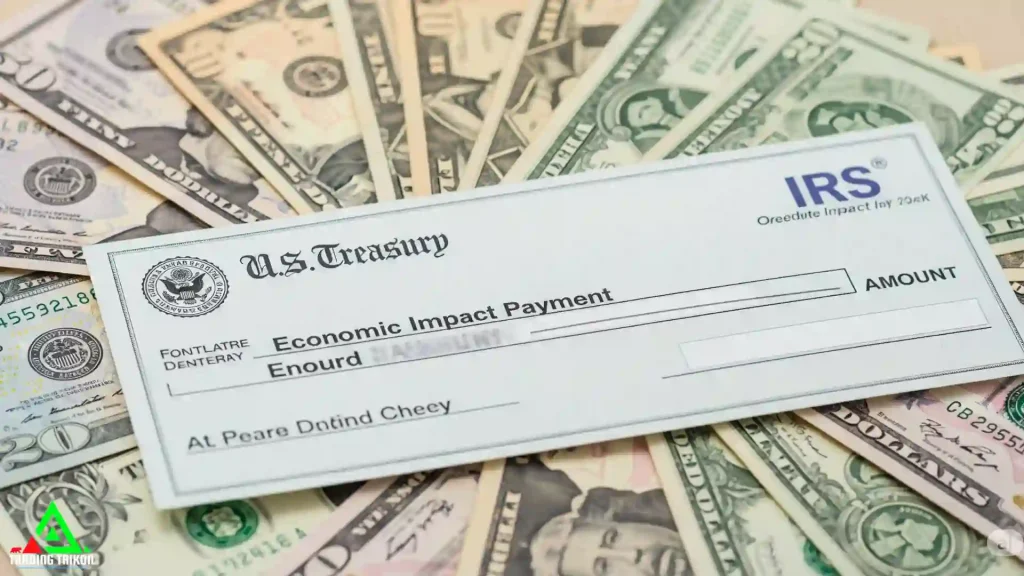In a world where economic uncertainties linger, whispers of stimulus checks can spark hope—and confusion. As we navigate 2025, many are wondering if the IRS is rolling out new relief payments to help with rising costs. The truth? While the federal government isn’t issuing fresh rounds of stimulus like during the pandemic, there are still ways some people might receive money they missed out on earlier. Plus, several states are stepping up with their own rebate programs to provide a financial boost.
This guide breaks down everything you need to know about stimulus check eligibility in 2025, how to track any potential payments, and why rumors of new federal checks might be misleading. Whether you’re checking for yourself or a loved one, we’ll cover the facts to help you stay informed and avoid scams.
Understanding the Federal Stimulus Landscape in 2025
The Economic Impact Payments—better known as stimulus checks—were a lifeline for millions during the COVID-19 crisis. The IRS distributed three rounds: up to $1,200 in 2020, $600 later that year, and $1,400 in 2021. But what about now?
No New Federal Stimulus Checks Approved
Despite online buzz about a “fourth stimulus” or payments like $1,390 or $2,000 hitting accounts this summer, the IRS has confirmed no new nationwide relief checks are in the works. Proposals, such as the American Worker Rebate Act introduced in July 2025, aim to fund rebates through tariffs on imports, potentially offering $600 or more per person. However, this bill is still in early stages in Congress and hasn’t been passed. Without legislative approval, the IRS can’t distribute such funds.
Instead, any “stimulus” talk in 2025 often stems from misunderstandings about past programs. For instance, the IRS wrapped up its automatic special payments in early 2025, sending out about $2.4 billion to around 1 million people who hadn’t claimed their 2021 Recovery Rebate Credit (RRC). These were essentially catch-up payments for the third stimulus round, maxing out at $1,400 per eligible individual.
Who Was Eligible for the 2021 Recovery Rebate Credit?
If you didn’t receive the full $1,400 third stimulus in 2021, you could have claimed it as a tax credit on your 2021 return. Eligibility mirrored the original rules:
- Single filers with adjusted gross income (AGI) under $75,000 got the full amount; it phased out up to $80,000.
- Married couples filing jointly under $150,000 qualified fully, phasing out at $160,000.
- Heads of household under $112,500 were eligible, phasing out at $120,000.
- Dependents, including children, could add $1,400 each if qualifying.
- U.S. citizens or resident aliens with a valid Social Security number were generally eligible, even if they had low or no income.
The deadline to file or amend a 2021 return and claim this credit was April 15, 2025. If you missed it, unfortunately, that opportunity has passed. However, if you filed on time but think you were shortchanged, check your IRS account for details.
Automatic Payments Sent in Early 2025
In December 2024, the IRS automatically issued payments to those who filed a 2021 return but left the RRC line blank or entered $0, despite being eligible. No action was needed—these went out via direct deposit (using your 2023 bank info) or paper check to your address on file. Most arrived by late January 2025. If you believe you qualified but haven’t seen the money:
- Log into your IRS Online Account to view your Economic Impact Payment history.
- Look for Letter 6475 (sent in 2022) or use the Tax Records tab in your account to confirm amounts received.
- If your bank rejected the deposit (e.g., closed account), the IRS would reissue it by mail.
These payments were tax-free and didn’t affect eligibility for benefits like SSI, SNAP, or Medicaid.
Other Federal Relief Still Available
While stimulus checks are done, don’t overlook related credits:
- 2021 Child Tax Credit: Eligible families can still claim up to $3,600 per child by filing a 2021 return before the April 15, 2025, deadline (now passed, but worth confirming if you filed). This was expanded during the pandemic and could mean significant refunds.
- Earned Income Tax Credit (EITC): For low- to moderate-income workers, this can provide up to $7,430 in 2024 (filed in 2025). Check IRS tools to see if you qualify.
Always verify info on IRS.gov to dodge scams promising “guaranteed” payments for a fee.
State-Level Rebates: Where the Real Action Is in 2025

With no federal stimulus on the horizon, many states are filling the gap with their own rebate programs, often funded by budget surpluses or tax revenues. These “inflation relief” or “tax rebate” checks vary by state, but they can put hundreds—or even thousands—back in your pocket. Here’s a roundup of states sending payments in 2025:
| State | Program Details | Eligibility | Amount | Timeline |
| California | Middle Class Tax Refund Extension | Residents who filed 2023 taxes; income limits apply | Up to $1,050 for joint filers | Rolling out through fall 2025 |
| Colorado | TABOR Refunds | All full-year residents who filed taxes | Around $800 single, $1,600 joint | Mailed or deposited by September 2025 |
| Florida | Property Tax Rebate | Homeowners with homestead exemption | Varies, up to $450 | Applications due by October 2025; payments by year-end |
| Georgia | Surplus Tax Rebates | Taxpayers who filed 2023/2024 returns | $250 single, $500 joint | Distributed starting August 2025 |
| Massachusetts | Chapter 62F Excess Revenue Refunds | Residents who paid state income tax | Approximately 14% of 2024 liability | Checks sent in November 2025 |
| Michigan | Working Families Tax Credit Boost | Low-income families with children | Up to $1,000 per child | Claimed on 2024 returns, refunds in 2025 |
| New Jersey | ANCHOR Property Tax Relief | Homeowners/renters with income under $250,000 | Up to $1,500 | Applications open now; payments in late 2025 |
| New Mexico | Tax Rebates | All filers; no income limit for base, bonuses for low-income | $500 single, $1,000 joint | Issued quarterly through 2025 |
| Pennsylvania | Property Tax/Rent Rebate | Seniors, widows, and disabled residents | Up to $1,000 | Expanded program; apply by December 2025 |
| South Carolina | Tax Rebate | Taxpayers with 2024 liability | Up to $800 | One-time payments in December 2025 |
Other states like Idaho, Maine, Rhode Island, and Virginia have similar initiatives—check your state’s revenue department website for specifics. Eligibility often requires residency, timely tax filing, and meeting income thresholds. These aren’t “stimulus checks” per se, but they function similarly, providing direct relief without federal involvement.
How to Track Your Payment or Refund
Wondering where your money is? Here’s your step-by-step guide:
- Create an IRS Online Account: At IRS.gov/account, verify your identity and access payment records, transcripts, and status updates.
- Use the Where’s My Refund Tool: For tax refunds (which might include credits), enter your SSN, filing status, and refund amount.
- Check State Tools: Most states have online portals (e.g., California’s FTB site) to track rebates.
- Monitor Your Mail and Bank: Payments often arrive unannounced—keep an eye out for official IRS or state letters.
- Contact Support: Call the IRS at 800-829-1040 only if needed; expect wait times. For states, use local helplines.
Pro tip: Update your address with the IRS via Form 8822 if you’ve moved.
Common Myths and Scams to Avoid
- Myth: A $1,390 check is coming automatically. This likely confuses the $1,400 RRC with rumors. No such program exists.
- Myth: You need to apply online for new stimulus. Legit payments are automatic; fake sites steal your info.
- Scam Alert: The IRS never calls, texts, or emails demanding payment or personal details. Report fraud to the Treasury Inspector General at tigta.gov.
Is the IRS sending out new stimulus checks in 2025?
No new federal stimulus checks have been approved by Congress or the IRS for 2025. Rumors about new payments are false, and there is no legislation currently moving forward to authorize a new round of payments. Any such claims are likely misinformation.
Can I still claim a missing stimulus check from a previous year?
The deadline to claim a Recovery Rebate Credit for previous stimulus payments (from 2020 and 2021) has passed. If you were eligible but never received a payment, you could have claimed it by filing a 2021 federal tax return by April 15, 2025. This window is now closed.
How can I track the status of my tax refund or other IRS payments?
You can check the status of a tax refund using the “Where’s My Refund?” tool on the official IRS website. You’ll need your Social Security number, filing status, and the exact refund amount from your tax return. This tool is not for tracking past stimulus checks.
What is the status of the “American Worker Rebate Act”?
The “American Worker Rebate Act,” proposed by Senator Josh Hawley, would provide payments from tariff revenue. However, the bill has faced significant opposition and has not passed Congress. It is not an approved program and there is no timeline for its implementation.
Are there any stimulus-style payments being issued at the state level in 2025?
While there are no new federal stimulus checks, some states are offering their own tax rebates or relief programs to residents. These are separate from federal payments and eligibility varies by state, often depending on your income and filing status for a specific tax year.
Staying on top of these opportunities can make a real difference in your finances. Bookmark this page for updates, and share it with friends who might benefit.



